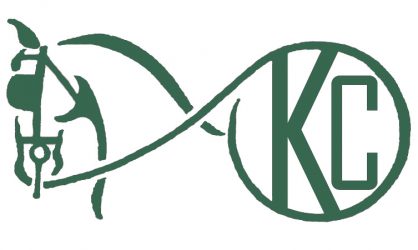The 2017 event will take place at the Kentucky Horse Park, October 5-8. Join us for the 2017 National Single Combined Driving Championships!
Admission to the event is included with admission to the Kentucky Horse Park. There are plenty of seats close to the action on Thursday, Friday and Sunday. On Saturday, you way wish to bring your own chair to the cross-country course.
What is a Combined Driving Event?
The modern sport of combined driving is both elegant and controlled, and fast and exhilarating.
Driving as sport and pastime grew out of the practicalities of the past, when horse-drawn transportation was the best, if not only, form of travel. But the sport of combined driving was developed in the late 1960s. This form of competition unites athleticism, speed, and extreme horsepower, with the grace and beauty of a bygone era.
The rules governing combined driving were created by the international equestrian federation (FEI) in the late 1960s. At that time, drivers in Europe were competing at events similar to today’s driving competitions, but there was virtually no consistency in how these events were judged or regulated. The FEI and its then-president, HRH Prince Philip (an avid driver himself), realized that this emerging sport needed consistent rules and standards in order to have any hope of growth or a future World Championship. The rules—modeled after those for eventing—were duly written, and driving was officially recognized as the FEI’s fourth international equestrian sport in 1970. Since then, the FEI has created World Championships—and the USEF has also created National Championships—in all the various driving divisions: single horses, pairs of horses, four-in-hand teams of horses, and ponies (singles, pairs, and teams all at the same championship).
Our event will host five divisions: CDE-Preliminary, CDE-Intermediate,
CDE-Advanced, CDE-FEI1*, CDE-FEI2*
There are three different classes within those divisions: Small Pony, Pony and
Horse
There are also three different types of turnouts accepted: Single, Pairs and Four-in-hand
In 2017 we will host the National Single Combined Driving Championships!
.

The first phase: Dressage
During the dressage test, each driver and his or her horse(s) or ponies should work together as a team. They will perform a set pattern of movements, and the judges will give scores (ranging from zero to ten, the higher the better) for regularity of gaits, correctness and accuracy of movements, harmony, suppleness, and the like. The competitors also receive scores for “general impression” and presentation—appropriate dress on the drivers and grooms, condition and cleanliness of the harness and vehicle, etc.
The judges’ scores are then added together for an overall total, averaged, and converted to a “penalty-point” score. The lower the score, the better.
For this phase, many competitors use traditional-looking carriages. Drivers’ and grooms’ outfits conform to long-standing carriage-driving traditions—hats, gloves, driving aprons on the drivers, and matching traditional livery on the grooms.
.

The second phase: Marathon
The marathon is judged primarily on time, so the object is to go as quickly as possible through each of the obstacles. Smooth and steady usually beats overly fast with too-sharp turns. But a driver who spends more than five minutes in an obstacle is eliminated.
In each marathon obstacle are up to six lettered “gates”—with the correct direction through each marked by red on the right and white on the left. Before the marathon phase, the drivers will have all walked each obstacle several times to determine their own route through the maze. The gates must be negotiated in the proper order (A, then B, then C, etc.), and missing a gate equals elimination.
The marathon score is determined by adding a driver’s times in the obstacles to any course penalties and to any overall time penalties, which are levied for coming in sooner than the minimum time or after the time allowed. Unlike the dressage and cones phases, the “navigators” on the back of each carriage are allowed to speak (yell, even) and to help with directions. They also often act as ballast, hanging off the back or sides of the carriage through especially tight turns. They are not, however, allowed to get off the carriage without incurring additional penalties.

The third phase: Cones Driving
On the final day of the event, the cones competition tests the horses’ and ponies’ agility, speed, and obedience. The drivers must navigate a complex course of twists and turns, marked by pairs of modified traffic cones, with a ball balanced on top of each cone. With mere centimeters of clearance between the carriage wheels and the cones, precision is key. Each ball (or pair of balls at a single gate) knocked down by an errant hoof or carriage wheel incurs three penalty points. Here again, the grooms on the back of the vehicle are not allowed to speak or to leave their seats without incurring additional penalties. Further penalties are added to a driver’s score for exceeding the time allowed.


